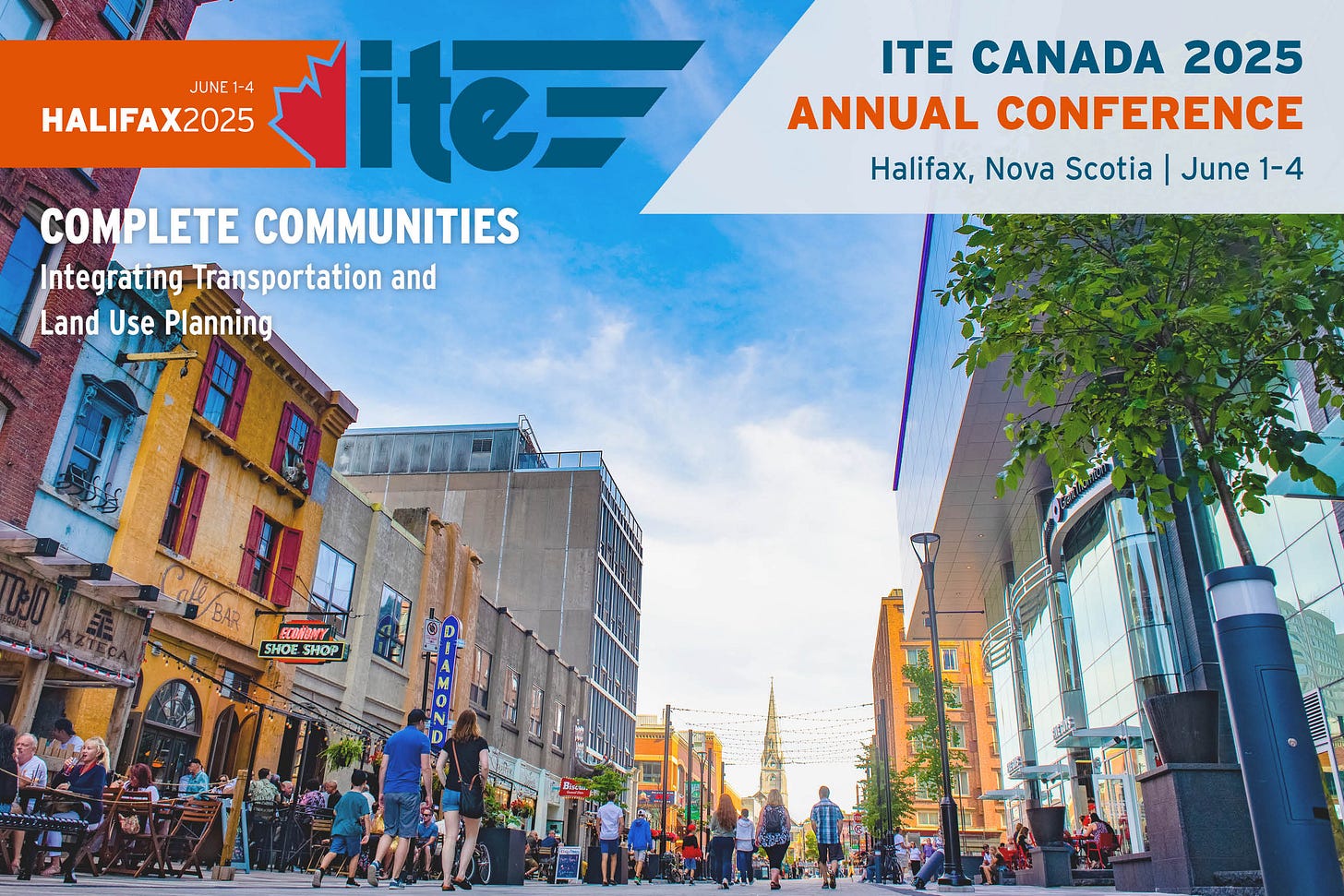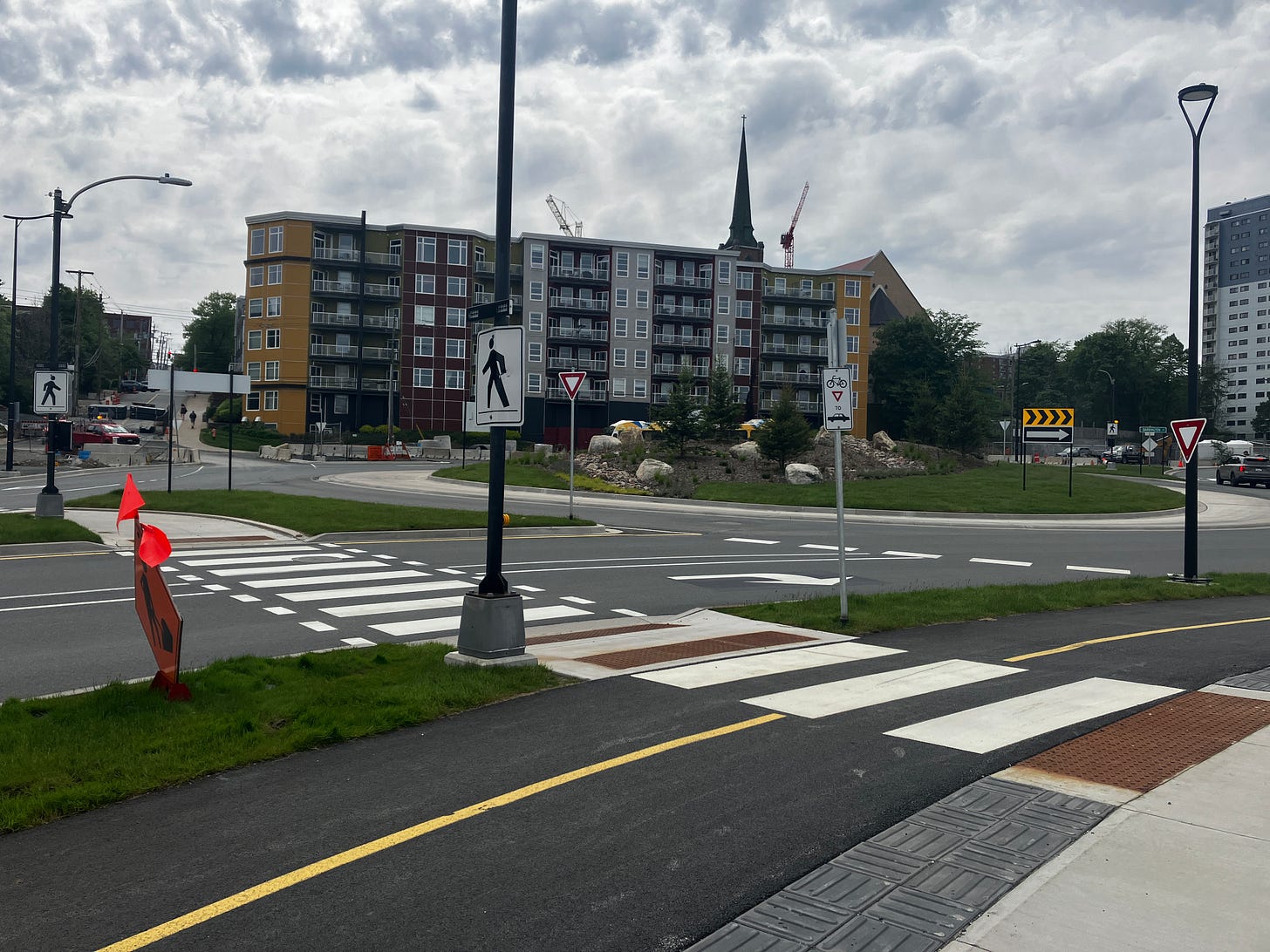Reflections from ITE Canada, Halifax 2025
Equity, Innovation, and the Evolving Role of Transportation Professionals
Attending ITE Canada 2025 was a timely reminder of how the transportation profession is evolving and a great opportunity to reconnect with my profession after our family-first sabbatical year. In this post, I wish to share some of my takeaways from the experiences in Halifax over the past few days, from procurement and signal strategies to transportation modelling trends and professional growth. The sections below are a small sampling of the wonderful sessions, presentations, and conversations experienced this week.
Rethinking Equity in Procurement Practices
One of the more nuanced sessions explored how public sector procurement is beginning to embed social values into technical evaluations. There’s growing interest in “social competency” metrics that mirror DEI-style assessments. While well-intentioned, this approach raised concerns about meeting some of the criteria.
Smaller firms (i.e. typically defined as those under 100 employees) may find themselves inadvertently disadvantaged. Often, without the support of corporate infrastructure or legacy documentation, newer firms may struggle to demonstrate the same level of maturity as larger competitors, even when led by seasoned professionals. An example discussed was a scenario of a newly formed consulting firm, founded by someone with 20+ years as a transportation professional, that may be penalized for not having been established for a long enough period.
However, this whole discussion emphasized that procurement frameworks may need to balance long-term social goals with fairness for emerging players in the profession.
Learning from the Dutch: Experimenting with Traffic Signal Control Logic
Another personal highlight came from a technical session on adapting Dutch-style signal control models for North American use in Canmore, Alberta. Using an existing, adapted Cobalt signal controller at the intersection, the project team demonstrated how pedestrian and right-turn movements were placed into Rings 3 and 4 (without a barrier) to enable more flexible, non-conflicting phase operations.
They implemented over 130 custom logic scripts, including a conflict clearance matrix (common in Dutch signals) to dynamically compute red clearance intervals for conflicting phases. The result? Smarter signal operations that improved safety and coordination. Notably, lagging left-turn phases were used to better align with pedestrian clearance intervals, a subtle but important touch.
Although this required adaptation from the project team (given the lack of European hardware available), the result was a clever use of existing technology that is now a practical example of how international design ideas could be tailored locally.
Human-centred Conversations on Career Growth
Aside from the typical technical content, I attended a few informal, non-technical sessions focused on personal journeys and professional growth. Career development circles created space for open conversations around hiring, transitions, and long-term aspirations.
More unique was a session focused on talking about the engagement of high school students in transportation engineering and STEM, where the speaker discussed what did and did not work when engaging with students. It was a powerful reminder of the importance of mentorship and creating visibility for the next generation of transportation professionals.
Halifax Evolves to an Activity-Based Model
Halifax Regional Municipality (HRM) shared their recent transition to an activity-based transportation modelling framework, building on GTA donor tools and modules, including TASHA and XTMF. They tailored this modular framework to local conditions, demonstrating how adaptable and cost-effective these tools can be as opposed to “reinventing the wheel”.
This shift reflects a broader industry movement away from traditional four-step models and toward more granular, person-level simulations.
Continuing March Toward Complete Streets and Road Safety
If there was a single thread woven through multiple sessions, it was this: transportation professionals are continuing the push on complete streets and road safety. From guidance documents to case studies, the emphasis was on building infrastructure that works for everyone, regardless of age, ability, or mode of travel.
Examples ranged from simple modifications to full multimodal retrofits. A clear trend moving away from car-first design continues in favour of inclusive, people-centred approaches. Even as technologies and policies shift, our foundational values of safety, equity, and sustainability remain as relevant as ever.
My favourite session was the walking tour of the new Cogwell district that is currently completing construction. The former interchange was removed in favour of a people-focused experience, effectively removing the barrier north of downtown and providing new people-focused development opportunities. It was a drastic and welcome change from my previous visit to Halifax, and I’m looking forward to seeing it evolve in the coming years.
My AI Presentation Takeaways
And lastly, my presentation, "Leveraging AI in Transportation Engineering", drew approximately 50-60 attendees, which was a welcome sight to see the interest. In my informal polling during the presentation, about two-thirds of the room had already tested AI tools on the job, but only a quarter felt confident using them. Roughly 10% expressed no interest in AI, which sparked an honest discussion around skepticism, trust, and professional judgment.
As a colleague of mine pointed out, what stood out most was the curiosity shown by younger professionals in attendance, especially those under 30. Both through the session and afterwards, through my conversations with attendees, deeper themes, including intellectual property, transparency, and the role of AI as a “junior engineer” needing oversight, continue to be prevalent. There have been some discussions and interest on both the presentation and white paper, so I am open to re-presenting this again where there is interest.
Final Thoughts
ITE Canada 2025 underscored two essential truths about our field: we must embrace innovation, but not at the expense of people. Whether we’re refining procurement policies, modernizing signal design, or experimenting with AI, the ultimate goal remains the same: creating transportation systems that are safe, equitable, and forward-thinking.
I’m grateful to have been part of these conversations and look forward to continuing them with colleagues old and new in the months ahead.
If you attended ITE Canada in Halifax this year, what are your key takeaways? What transportation trends in our industry are most important to you?






